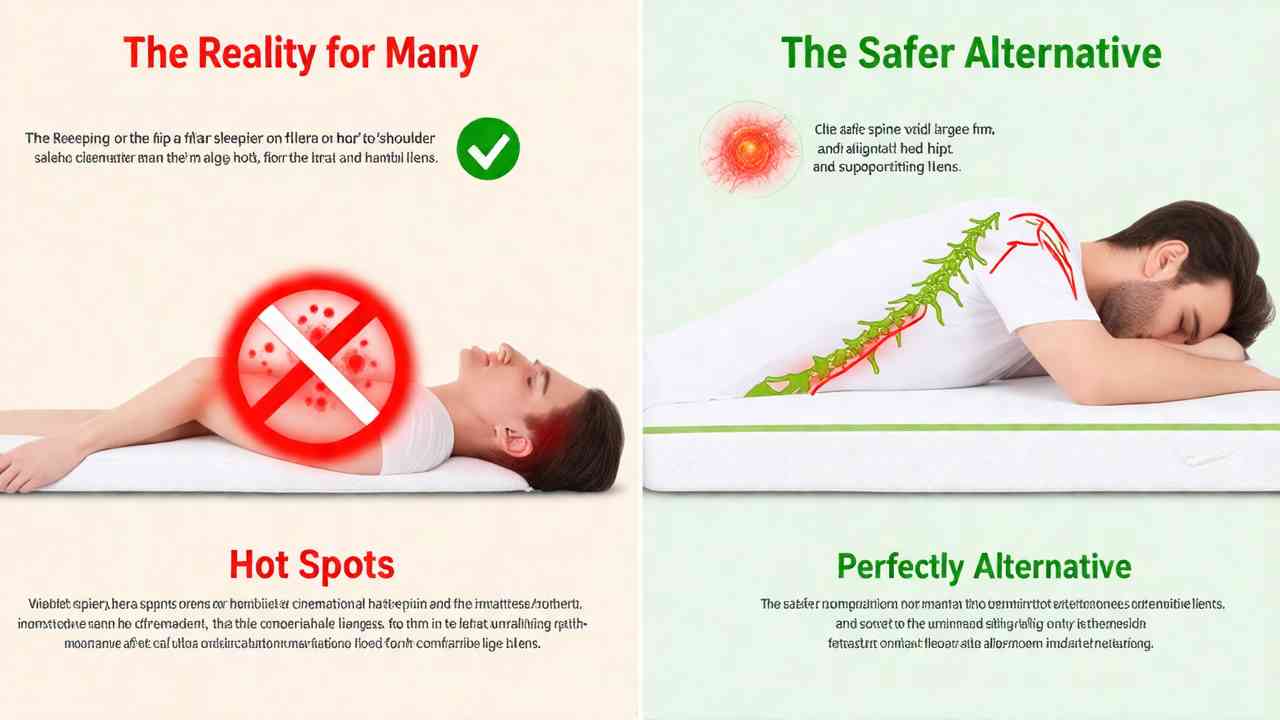
🛌 Is Sleeping on the Floor Good for You? (The Pros, Cons & Risks)
🛌 Is Sleeping on the Floor Good for You? A Guide to This Minimalist Trend 🛌
In the search for better sleep and less back pain, some people are turning to a radical solution: ditching their mattress altogether. The idea of sleeping on the floor has gained popularity in minimalist and wellness circles. Proponents claim it can lead to better posture and a pain-free back.
But is this ancient practice a forgotten secret to good health, or is it a painful mistake? The truth is, while it may work for a very small number of people, for most, it can do more harm than good. It is a trend that comes with significant risks.
This guide will explore the claimed benefits and the real-world downsides of sleeping on the floor. Let's separate the facts from the fiction. ✅
🤔 What Are the Claimed Benefits of Sleeping on the Floor?
The main argument in favor of floor sleeping is about spinal alignment. The theory is that a hard, flat surface can be beneficial for your back. Here are the main claims.
Can it help with back pain and posture?
The theory is that a very soft mattress allows your body to sink in. This can curve your spine into an unnatural position. A firm, flat surface forces your spine to stay in a more neutral alignment. For some people, particularly back sleepers, this can provide relief. 🧘♀️
Does it help you sleep cooler?
Yes, this is a real physical effect. Floors are generally cooler than beds. Heat rises, and mattresses can trap body heat. Sleeping on the floor can be a much cooler experience. This can be a benefit for people who tend to sleep hot. ❄️
⚠️ What Are the Serious Risks and Downsides?
While the theory sounds good, the reality of sleeping on the floor is very different for most people. The downsides are significant and can lead to more pain and other health issues.
1. Why can it cause more pain?
This is the biggest risk. Your body is not flat. It has curves. A hard floor creates intense pressure points on your hips, shoulders, and the back of your head. For side sleepers, this can be incredibly painful. It can throw your spine out of alignment and lead to joint pain.
2. What about hygiene and allergens?
Floors are home to dust, dirt, dust mites, and other allergens. When you sleep on the floor, you are breathing in these particles all night long. For anyone with allergies or asthma, this is a major health concern. 🤧
3. Can you get too cold?
Sleeping cooler is one thing, but getting too cold is another. The floor can be very cold, especially in the winter. The cool autumn floors here in Bursa are a good example. This can make it difficult to get a comfortable and restful night's sleep.
4. What about mobility issues?
Getting up and down from the floor can be a challenge. This is especially true for older adults or anyone with mobility issues. It can put a strain on the knees and back.
⭐ What is the Safer, More Effective Alternative?
If you are looking for the back-supporting benefits of a hard surface, the solution is not the floor. The solution is a firm, high-quality mattress. A firm mattress provides the support your spine needs to stay in a neutral alignment. It does this while still having enough cushion to relieve your pressure points.
You can also explore options like a traditional Japanese futon on a tatami mat. This provides a firm, breathable sleep surface. It is a structured approach that is much safer than a bare floor. Listen to your body. For the vast majority of people, a good mattress is the key to a healthy and pain-free night's sleep. ✨